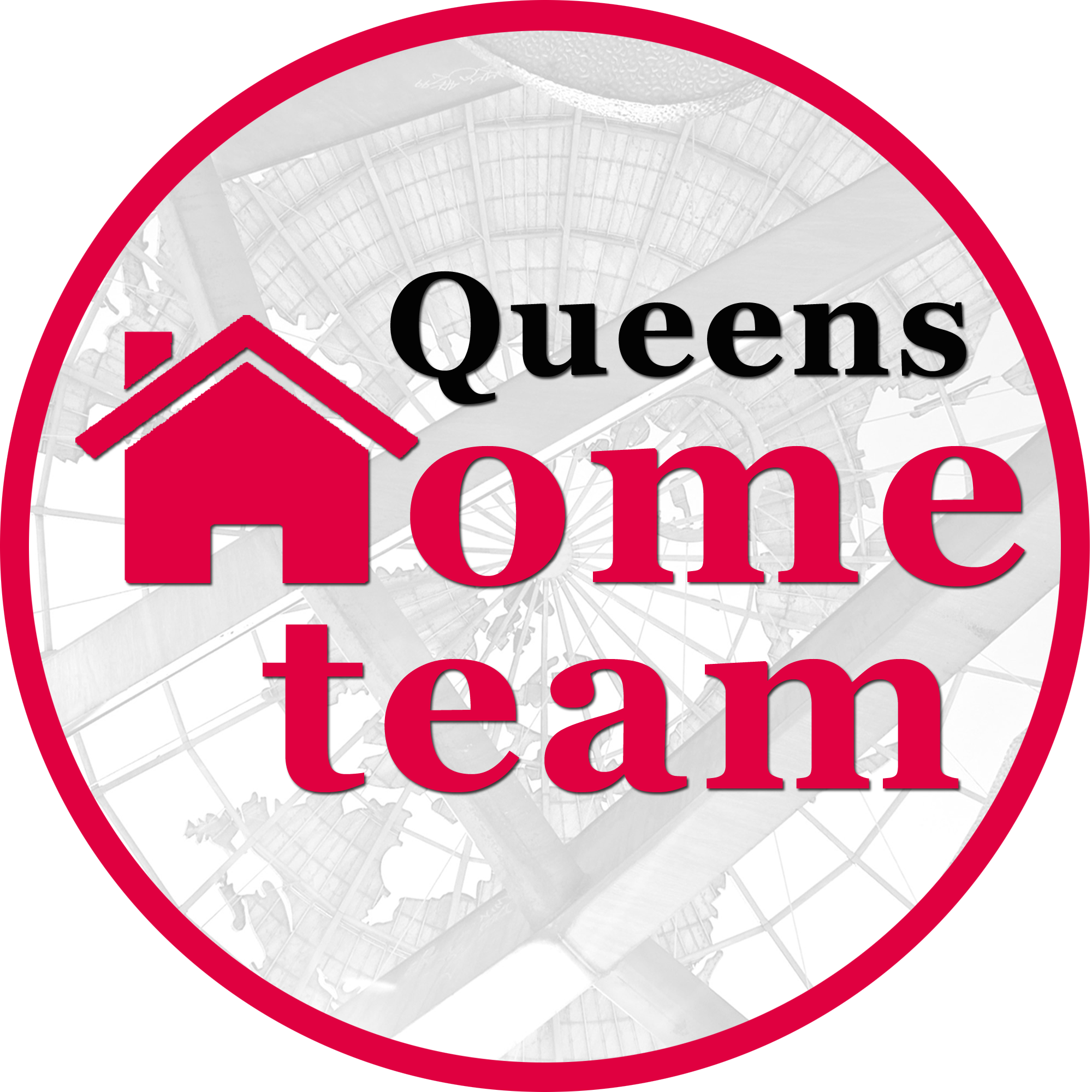If you’re familiar with Queens, then you probably already know about the Astoria Queens Neighborhood. Arguably the most popular neighborhood in Queens and definitely one of the most in demand areas to live in NYC, Astoria has a whole lot to offer. From the plush Astoria Park, to the shopping and restaurants on 30th Ave/Steinway/Ditmars/Broadway, to the tree lined streets in Ditmars, there is so much to see and appreciate in this neighborhood. So, we have compiled a list of 50 fun facts that you may or may not know about the neighborhood. Check them out and feel free to comment if you have any additions:)
1. Astoria is bounded by the East Riverand is adjacent to three other Queens neighborhoods: Long Island City, Sunnyside(bordering at Northern Boulevard), and Woodside (bordering at 50th Street).
2. The area now known as Astoria was originally called Hallet’s Cove, after its first landowner William Hallet, who settled there in 1659 with his wife, Elizabeth Fones.
3. Beginning in the early 19th century, affluent New Yorkers constructed large residences around 12th and 14th streets, an area that later became known as Astoria Village (now Old Astoria).
4. Hallet’s Cove, founded in 1839 by fur merchant Stephen A. Halsey, was a noted recreational destination and resort for Manhattan’s wealthy.
5. The area was renamed after John Jacob Astor, then the wealthiest man in America with a net worth of over $40 million, in order to persuade him to invest just $2,000 in the neighborhood. He only invested $500, but the name stayed nonetheless, as a bitter battle over naming the village finally was won by Astor’s supporters and friends.
Click Here to find One Family Homes for Sale in Astoria NY
6. During the second half of the 19th century, economic and commercial growth brought increased immigration from German settlers, mostly furniture and cabinet makers. One such settler was Heinrich Engelhard Steinweg Steinway & Sons in 1853, which today is a worldwide piano company.
7. Later on the Steinways built a sawmill and foundry, as well as a streetcar line. The family eventually established Steinway Village for their workers, a company town that provided school instruction in German as well as English.
8. Astoria and several other surrounding villages, including Steinway, were incorporated into Long Island City in 1870.
9. Long Island City remained an independent municipality until it was incorporated into New York City in 1898.
10. Astoria figured prominently in early American filmmaking as one of its initial centers, a heritage preserved today by the Museum of the Moving Image Kaufman Astoria Studios.
Click Here to find out how much your Astoria NY Home is worth
11. Astoria was first settled by the Dutch Germans in the 17th century.
12. Many Irish settled in the area during the waves of Irish immigration into New York City during the 19th and early 20th centuries.
13. Italians were the next significant immigrants in Astoria, and numerous Italian restaurants, delis, bakeries, and pizza shops are found throughout Astoria, particularly in the Ditmars Boulevard area.
14. Jews are also a significant ethnic and religous group. The Astoria Center of Israel, which is listed on the National Register of Historic Places, was built in 1925 after outgrowing the former Congregation Mishkan Israel, which was built in 1904.
15. The 1960s saw a large number of ethnic Greeks from Greece, and immigrants from Cyprus in 1974.
Click Here to find Multi Family Homes for Sale in Astoria NY
16. The Greek cultural imprint can be seen in the numerous Greek restaurants, bakeries, tavernas and cafes, as well as several Greek Orthodox churches.
17. Many Maltese residents live in Astoria, around 20,000, and although this population has steadily been emigrating from the area, there are still many Maltese, supported by the Maltese Center of New York.
18. Beginning in the mid-1970s, the neighborhood’s Arab population grew from earlier immigrants from Lebanon to also include people from Egypt, Syria, Yemen, Tunisia, Morocco and Algeria.
19. In the 1990s, Steinway Street between 28th Avenue and Astoria Boulevard saw the establishment of many Arabic shops, restaurants and cafes, which is unofficially called “Little Egypt”.
20. Astoria’s South American and European population has seen significant growth since the early 1990s, including a large population of Brazilians, who reside in the 36th Avenue area. Albanians, Bulgarians, and Bosnians have also shown a rise in numbers.
Click Here for a Free Astoria NY Real Estate Market Report
21. Many Spanish Americans live in Astoria, with most of them being of Galician heritage from Northwestern Spain; this community being supported by the Casa Galicia, or Galicia House.
22. At one time, many Bangladeshi Americans settled in Astoria, but by 2001, many of the Bangladeshi American people in Astoria had moved to Metro Detroit. A survey of an Astoria-area Bengali language newspaper estimated that, in an 18-month period until March 2001, 8,000 Bangladeshi people moved to the Detroit area.
23. There is some debate as to what constitutes the geographic boundaries of Astoria. The neighborhood was part of Long Island City prior to the latter’s incorporation into the City of New York in 1898, and much of it is still classified as LIC by the USPS.
24. The area south of Astoria was called Ravenswood, and traditionally, Broadway was considered the border between the two. Today, however, many residents and businesses south of Broadway identify themselves as Astorians for convenience or status, since Long Island City has historically been considered an industrial area, and Ravenswood is now mostly a low-income neighborhood.
25. The eastern end of Astoria, with Steinway Street as its main thoroughfare, is sometimes referred to simply as “Steinway”.
Click Here to find 1 BR Coops and Condos for Sale in Astoria NY
26. The northern end around Ditmars Boulevard is sometimes referred to as “Ditmars”.
27. Banners displayed on lamp posts along 30th Avenue refer to it as “the Heart of Astoria”.
28. Ravenswood is the name for the strip of land bordering the East River in Long Island City, and is part of Astoria.
29. Ravenswood remained an exclusive hamlet within the Town of Newtown until its absorption with the Village of Astoria and the hamlets of Hunters Point, Blissville, Sunnyside, Dutch Kills, Steinway, Bowery Bay and Middleton in Newtown Township into Long Island City in 1870.
30. In 1870, Ravenswood, along with several other hamlets and the Village of Astoria, merged to form Long Island City.
Click Here to find 2 BR Coops and Condos for Sale in Astoria NY
31. Ravenswood was heavily commercial, and remains so to this day. However, the name has retained its residential character through the New York City Housing Authority project that was built in 1949 to 1951 with this name between 34th and 36th Avenues, and 12th and 24th Streets.
32. The Ravenswood name also identifies the large electric power station established along the shore of the East River, just south of the Roosevelt Island Bridge.
33. Ditmars is a middle class section of Astoria bounded by Bowery Bay to the north, 31st Street to the east (boundary with the adjacent neighborhood of Steinway, with which Ditmars is sometimes confused), 23rd Avenue to the south and the East River on the west.
34. The Steinway neighborhood was largely developed as a company town by the Steinway & Sons piano company, and included houses and public facilities that were also available to non-employees.
35. The Ditmars neighborhood was not included in the Steinway & Sons company housing and related facilities project.
36. Ditmars is considered to be a popular neighborhood among young professionals and in some real estate references the adjacent neighborhoods of Ditmars and Steinway are joined as a single “Ditmars-Steinway” reference.
37. The Ditmars neighborhood takes its name from Ditmars Boulevard which was named in honor of Raymond Lee Ditmars, (1876-1942) famed American herpetologist and curator of Reptiles of the New York Zoological Society at the Bronx Zoo.
38. Astoria Heights, or Upper Ditmars, is bounded by Hazen Street to the west, La Guardia Airport to the east, Bowery Bay to the north, and Astoria Boulevard and the Grand Central Parkway to the south. It is mostly a quiet middle class neighborhood of 1 and 2 family private homes.
39. The Riker-Lent Homestead is near the north end of Astoria Heights at 78-03 19th Road. Built around 1655 by Abraham Riker under a patent from Nieuw Nederland’s last governor, Peter Stuyvesant, it is believed to be the oldest remaining dwelling in New York City still used as a residence.
40. Before Prohibition, there were dance halls, picnic areas and amusement park rides at North Beach.
41. The Rikers Island Bridge to New York City’s main prison, Rikers Island, runs from the north end of Hazen Street. Technically, Rikers Island is in the Bronx since New York City took it over from Long Island City in 1884, after it had annexed the South Bronx but before it consolidated Queens. However, like Astoria Heights, Rikers Island gets its mail from the East Elmhurst (Zip code 11370) station of the Flushing Post Office.
42. Astoria is served by the E M R trains of the New York City Subway that stop at Steinway Street and 46th Street stations on the underground IND Queens Boulevard Line as well as the N Q trains which run along the elevated BMT Astoria Line above 31st Street.
43. The primary streets running north-south are Vernon Boulevard along the East River; 21st Street, a major traffic artery with a mix of residential, commercial and industrial areas; 31st Street; and Steinway Street (named for Heinrich Engelhard Steinweg (later Henry E. Steinway), founder of the piano company Steinway & Sons).
44. Steinway Street is a major commercial street with many retail stores, and a very prominent Middle Eastern section between Astoria Boulevard and 28th Avenue, the area is full of Middle Eastern food restaurants which present some local types of food from Lebanon, Egypt and Morocco, most food in these restaurants is Halal to suit the Muslim residents who are main customers in this neighborhood.
45. Because of its proximity to Manhattan and semi-reasonable rents, Astoria has become home to an ever-increasing number of fledgling actors lending to the nomenclature “Actoria”—a term coined by Astorian actor/writer Jason Arcaro who moved to Astoria in the 1990s before the thespian “coup de main”.
46. The Robert De Niro film GoodFellas (1990) was filmed on location in Astoria.
47. The Showtime original series Nurse Jackie is shot at Kaufman Astoria Studios as well as on location in Astoria.
48. The Netflix original series Orange Is the New Black is shot at Kaufman Astoria Studios as well as on location in Astoria.
49. The block of 37th Street between Ditmars Boulevard and 23rd Avenue is sometimes referred to as “the Seinfeld Street.” In the Seinfeld television show, this street is occasionally seen in external establishing shots as the block where George Costanza’s parents live.
50. Kaufman Astoria Studios has been longtime host to the PBS series Sesame Street and has been credited with local shoots on films like The Stepford Wives, the 2009 remake of The Taking of Pelham 123, and the Golden Globe-winning Angels in America.
Blog courtesy of George & Abigail Herrera w/the Queens Home Team at Keller Williams Realty.
75-35 31st Ave, Ste. 202 | Queens, NY 11370 | 718.869.0270
BUY: www.exclusivequeenshomes.com | SELL: www.queenshomeselling.com














